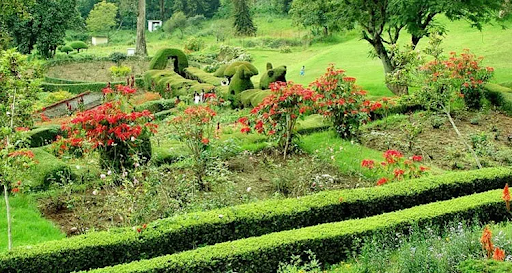Kodaikanal
Kodaikanal, often referred to as the "Princess of Hill Stations," is a picturesque hill town located in the Dindigul district of Tamil Nadu, India. Nestled at an elevation of around 2,133 meters (7,000 feet) above sea level in the Western Ghats, Kodaikanal is renowned for its stunning landscapes, serene lakes, lush greenery, and pleasant climate. Here’s a detailed overview of Kodaikanal as a tourist destination:
Kodaikanal Lake
Description: This star-shaped, man-made lake is the centerpiece of Kodaikanal. It was created in 1863 by Sir Vere Henry Levinge, the then Collector of Madurai.
Activities: Boating, cycling around the lake, and horse riding are popular activities. The lake is surrounded by a 5 km long path, ideal for a leisurely walk or a cycle ride.Kodaikanal Lake
Bryant Park
Description: Adjacent to Kodaikanal Lake, Bryant Park is a well-maintained botanical garden named after its designer, H.D. Bryant.
Attractions: The park boasts a wide variety of flowers, hybrids, and grafts. The annual horticultural show in May is a major draw for tourists.Bryant Park
Coaker's Walk
Description: This is a 1 km long pedestrian path running along the edge of steep slopes on the southern side of Kodaikanal.
Attractions: On a clear day, one can enjoy breathtaking views of the plains and distant hills. The Telescope House at the end of the path provides a closer view of the surrounding landscape.Coaker Walk
Pillar Rocks
Description: These are three massive granite boulders standing vertically, measuring about 400 feet in height.
Attractions: The surrounding area is perfect for picnicking, and the view from the top is spectacular, especially when the clouds part to reveal the rocks.Pillar Rocks
Guna Caves
Description: Also known as Devil's Kitchen, these caves gained popularity after the Tamil movie "Guna" was shot here.
Attractions: The caves are surrounded by thick forests and are a great spot for adventurous souls. However, they are quite dangerous, and some areas are off-limits.Guna Caves
Berijam Lake
Description: A serene and less crowded lake located about 21 km from Kodaikanal town.
Attractions: Surrounded by dense forests, Berijam Lake is a haven for bird watchers and nature enthusiasts. Permission from the Forest Department is required to visit.Berijam Lake
Silver Cascade Falls
Description: This is a 180-foot high waterfall located on the Kodaikanal-Madurai road.
Attractions: It’s a popular spot for a quick stopover to enjoy the refreshing sight of the falls.Water Falls
The best time to visit Kodaikanal is from April to June and from September to October. During these months, the weather is pleasant, and the natural beauty of the region is at its peak.
Kodaikanal offers a wide range of accommodation options, from budget hotels and homestays to luxury resorts. Popular areas to stay include the vicinity around the lake, where many hotels offer beautiful views of the water.
Local Cuisine
The local cuisine is a blend of traditional Tamil Nadu flavors with a touch of continental influences. Popular dishes include:
Local Tamil Cuisine: Idli, dosa, sambar, and vada.
Specialties: Freshly baked bread, pastries, and chocolates, which are a legacy of the British era.Local Dish
Herbal Tea and Coffee: Made from locally grown herbs and coffee beans.
Travel Tips
Permits: For visiting Berijam Lake, a permit from the Forest Department is necessary.
Clothing: Carry warm clothing irrespective of the season, as it can get quite cold, especially in the evenings.
Footwear:-Comfortable walking shoes are recommended for exploring the hilly terrain.
Kodaikanal, with its enchanting beauty and myriad of attractions, is a perfect destination for those seeking tranquility and a rendezvous with nature. Whether you are an adventure enthusiast, a nature lover, or someone looking to unwind, Kodaikanal has something to offer for everyone.Enjoy With Nature























